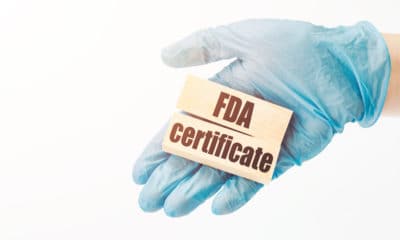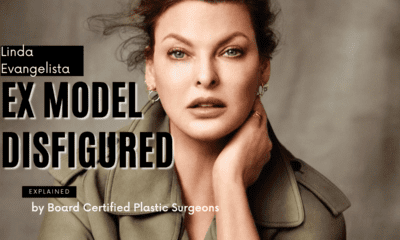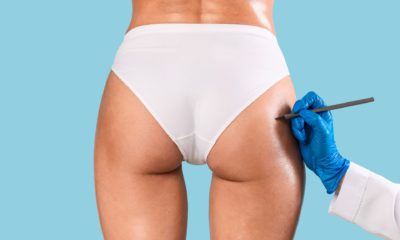An interesting concern that some aesthetics-conscious patients have is in regards to the belly button. Whether it be from piercings, weight gain/loss, or the experience of childbirth, the belly button – or umbilicus – can be negatively impacted. It’s position on the abdomen is a key aesthetic, providing an eye-catching reference point that allows for symmetry of the chest and torso. When the belly button is noticeably off-center or deformed, this can significantly impact the look of the abdomen.
Are there any fixes? Board certified plastic surgeons discuss the potential of umbilicoplasty and how damaged belly buttons can be treated surgically, in the right patient.
Symmetry and Three Dimensions
Symmetry is a concept knitted deeply into the way we view and parse the world. When things that are presumed to be symmetrical – such as the belly button in the “mid-line,” or middle of the abdomen – are not, they tend to stand out as “wrong.” Women who’ve undergone bodily changes may see this dramatic asymmetry in regards to their belly button.
“If the belly button is not in the mid-line, it’s usually because of twin birth or eccentricity of abdominal stretching. I’ve seen this a lot in abdominoplasty where the fetus was stretching one side more so you get the belly button pushed over to one side,” shares board certified plastic surgeon Dr. Dan Del Vecchio.
This asymmetry is only half the battle. When it comes to an abdominoplasty, or tummy tuck, the umbilicus will need to be “moved” to a new position within the skin. At this point, it is up to the surgeon to preserve three dimensionality of the belly button, rather than make it flush with the abdominal skin. Dr. Del Vecchio says the importance of a three dimensional belly button is greater than one that is perfectly symmetrical along the abdomen’s mid-line.
“What’s important is the fact that the belly button should never be flush with the abdominal skin, ” he explains. “The real art of umbilicoplasty and abdominoplasty is to obviously keep it mid-line but also to get it down in a three dimensional way. A well-placed umbilicus that has three dimensionality that’s off-center is OK; it’s way better than a perfectly symmetric umbilicus that is flush with the skin.”
Humans Want Symmetry but Technically Asymmetrical
True beauty isn’t perfection, but perhaps a perfect blend of nuanced imperfections. Breast augmentation patients often ask or are concerned with the idea of achieving symmetrical breasts, yet will be reeducated that breasts are not twins, they’re sisters. The same goes for most of the human body; asymmetry is the norm and is responsible for true beauty. Perfect symmetry is just too perfect, potentially giving off a look of artificiality. This is true of the belly button..
“Human beings are naturally asymmetric; no one really truly has a mid-line umbilicus,” shares Dr. John Diaz, a board certified plastic surgeon practicing in Beverly Hills. “What I have seen – I have had patients who request this – is patients who maybe had piercings when they were younger then they had children and the belly button stretches. I have found that it is really hard to fix those belly buttons; I’m a little reluctant to do these.”
Dr. Diaz is speaking to a targeted belly button procedure – also known as an umbilicoplasty. While some correction is possible, many of the most experienced surgeons might say to trust in asymmetry instead of trying to perfect something that is naturally imperfect. The concern is an entire surgical procedure just to address a minuscule concern may not be worth it, and could even be dangerous and/or cause further issues/scarring.
“I think this is really about evaluating the deformity, talking with the patient, understanding what their complaint is, and whether or not you feel comfortable and confident enough to fix it,” adds board certified plastic surgeon Dr. Jason Cooper. “There are times when someone comes in and they have a minor issue with their belly button, it’s a relatively simple solution, you feel comfortable that the outcome will be predictable, and you can make this person happy. One the other hand, you can fall into scenarios where the enemy of good is perfect. In which case you want to avoid that type of operation and communicate with the patient.”
Is Surgery Worth It? Alone, Probably Not
The tummy tuck procedure, as previously noted, always also concerns itself with the belly button. An experienced plastic surgeon with tummy tucks will likewise be experts at placing the umbilicus into a generally symmetric, three dimensional position. This is great for those patients, but some who just want a pointed operation towards the belly button may not find the ultimate trade for a scar worth it.
“There are two things here,” begins board certified plastic surgeon Dr. Pat McGuire. “I see some very thin women who come in and think they need abdominoplasty. Then when you see them, what they don’t like is some loose skin, and a few little stretch marks right above their belly button. They have to realize if you’re going to take that extra skin off above the belly button, they’re going to trade a scar. Is that a worthwhile trade? The other thing is, if somebody is noticing that their belly button is a millimeter or two offline, you’re asking for trouble. The chances of you being able to fix that as an isolated procedure are slim to none.”
Dr. Steven Camp, a board certified plastic surgeon in Fort Worth, thinks many of these patients may be describing problems more associated with a tummy tuck fix rather than just a belly button issue. Like all of great plastic surgery, the consultation with the patient is critical. An open and honest discussion between patient and surgeon will be what leads to the best, most accurate results.
“For me, it’s very simple. Does the patient need an abdominoplasty (tummy tuck) or not?” shares Camp. “There are some minor things, maybe an old piercing where some loose or folded over skin can be excised, and the trade-off for that new scar is better and acceptable to the patient. But sometimes when a patient says they’re focused on their belly button…you have to be really careful that they don’t think they’re going to get the correction they want with just an umbilical procedure. Maybe they want a tummy tuck but they’re just not using the right words. We have to clue into what the patient’s emotions are, what the kind of psychiatry of that discussion is and be aware of that.”
















Facebook
Twitter
Instagram
YouTube
RSS